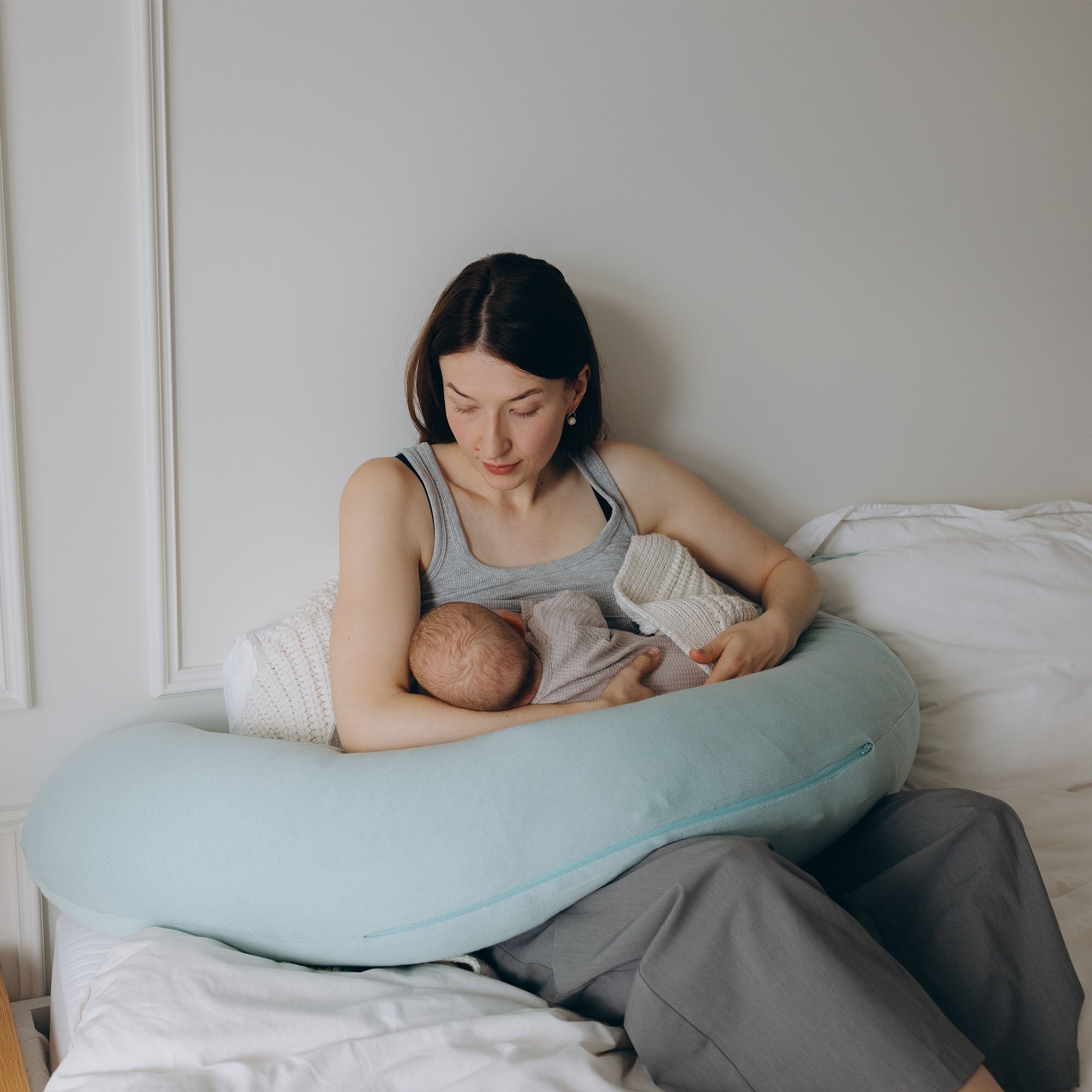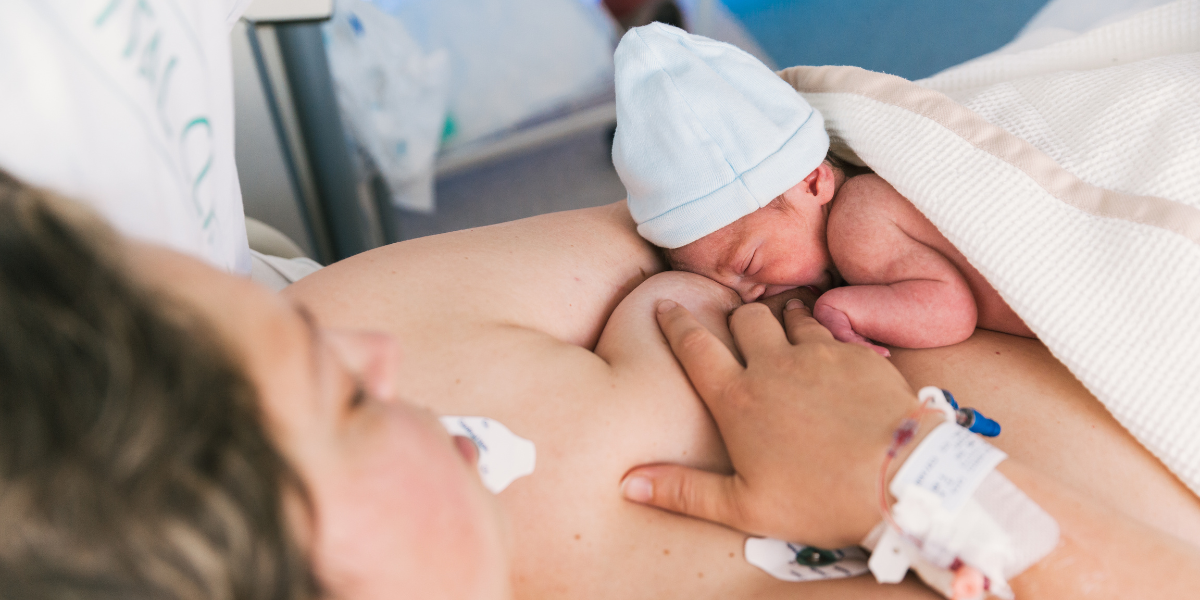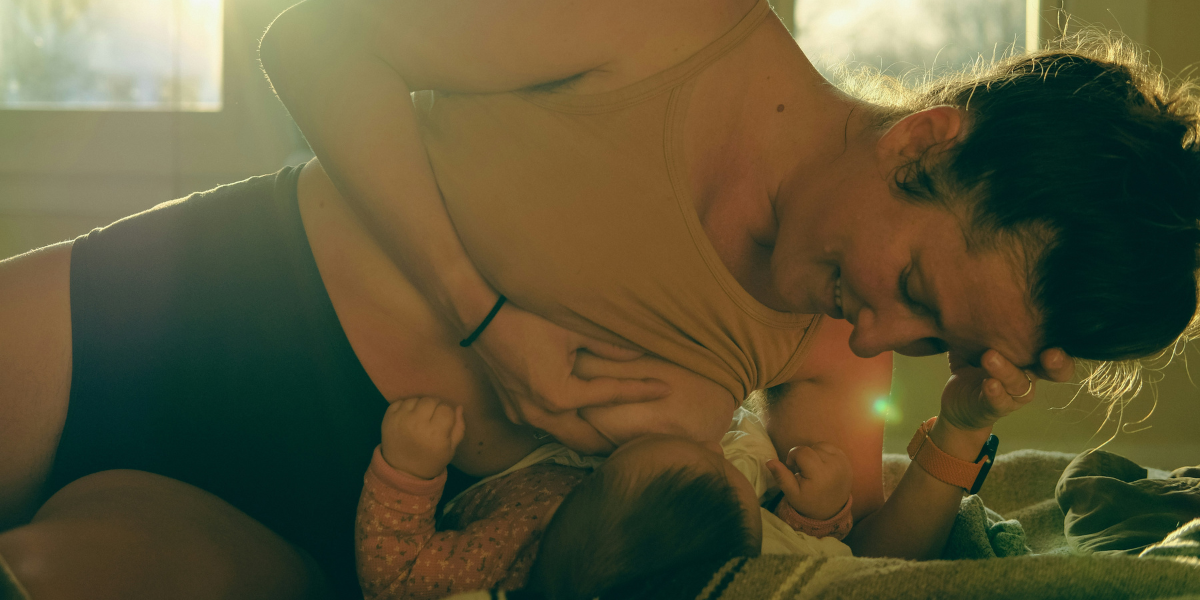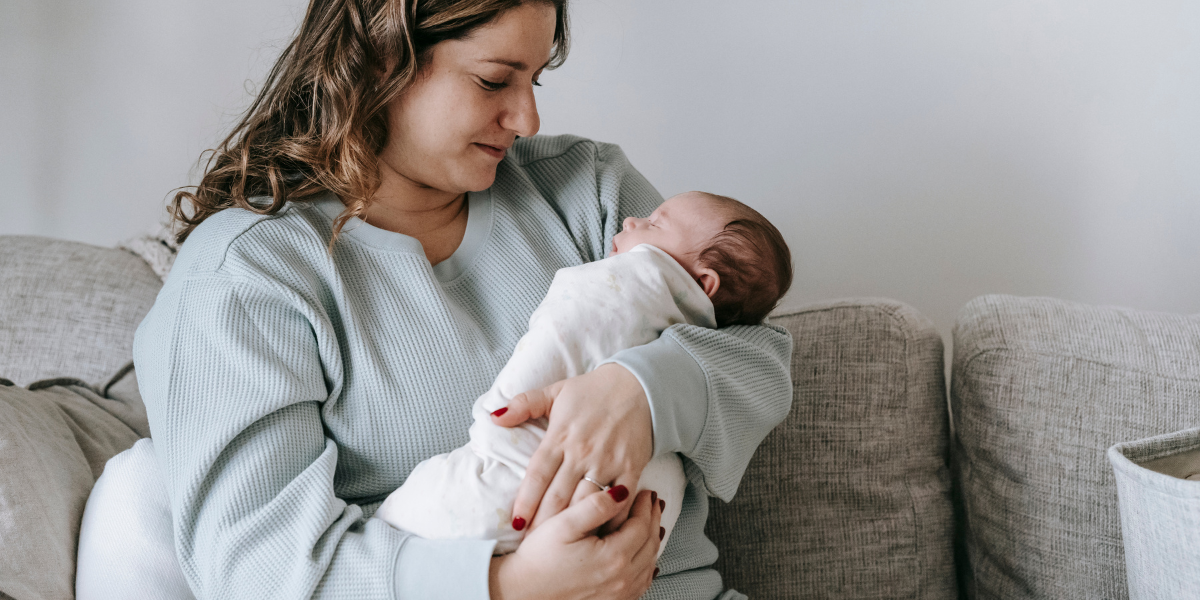As soon as your baby is born, it is already looking for your closeness. The warmth you give it and the feeling of your heartbeat and skin help to build trust. In this article, we will explain what bonding is, why it is so important, what benefits it offers and how you can carry out bonding after birth.
What does bonding after birth mean?
Bonding is English and means connection. This connection between parents and their child develops in the period after birth, when the newborn receives protection, warmth, love and attention from its parents. With the first skin contact (usually with the mother, by placing the baby on her stomach after birth), bonding begins and the emotional bond between parents and child develops.
Why is the parent-child bond so important?
Close physical contact immediately after birth is important for getting to know each other, and for building and strengthening a bond. Bonding in the first few months of life not only contributes to short-term well-being, but also lays the foundation for the baby's long-term development. A good parent-child relationship is the key to later relationship skills and the development of self-confidence. When babies feel safe, they build trust in other people and their environment, and later learn to be independent and self-confident.
The benefits of bonding for the baby
- Bonding promotes basic trust.
- Bonding is the start of a harmonious breastfeeding relationship and the first attachment often happens naturally.
- Intensive skin contact, smell, heartbeat and voice of the mother give the baby security and help it to adapt better to the new environment.
- Early breastfeeding provides the newborn with valuable nutrients, immune substances and digestive enzymes.
- The baby has better temperature regulation and a more restful sleep.
The benefits of bonding for mom
- Bonding increases the mother’s confidence in her own maternal abilities.
- Milk production is promoted and pain perception is reduced.
- Bonding ensures emotional balance.
- The involution of the uterus is stimulated by bonding and breastfeeding.
Bonding after birth: How does the bond with the child work?
- Skin contact: The direct skin contact between mom and baby and dad and baby makes your newborn feel particularly comfortable, safe and secure. Your baby is more aware of your smell and heartbeat when it lies on your stomach/chest.
- Warmth : Direct skin contact provides pleasant warmth. But make sure that the room is not too cold. For more comfort, you can lay your baby on your chest/stomach and cover him or her with our soft knitted baby blanket .
- Breastfeeding and bottle feeding: When breastfeeding and bottle feeding, the "cuddle hormone" oxytocin is released, which promotes bonding. At the same time, the baby feels safe, close and warm during breastfeeding. If breastfeeding doesn't work for you, try to have plenty of skin-to-skin contact while giving the bottle.
- Carrying : Babies are carried and cannot be spoiled by too much carrying and love. Carry your baby in your arms, in a carrier or a sling - always with as much skin contact as possible. Your baby can also sleep by your side at night, ideally until it is ready to sleep alone. By being close to your child, you always give it a feeling of security.
- Eye contact : After birth, babies cannot see far or very clearly, but over time they will recognize their parents' faces. Early and regular eye contact ensures even stronger bonding.
- No sensory overload : In the first few months, every day with your baby seems the same, but for your baby, every day is different and exciting. Babies cannot yet regulate themselves and their emotions. Bonding helps your baby to stay relaxed and calm. But still ensure that the environment is free of stimuli, such as a warm and quiet room with dim lighting.
Is breastfeeding also bonding?
Yes, you build a special bond with your baby, especially when breastfeeding. The hormone oxytocin, which is released when breastfeeding and cuddling, ensures that you feel completely comfortable, safe and born. This also works when bottle feeding.
Can dad also take part in bonding after the birth?
Absolutely! So that both parents can build a close bond with their child, it is important that both spend a lot of time with the child. With the exception of breastfeeding, the father can implement all bonding options that are also possible for the mother. Especially in the period after the birth, when the mother is still exhausted and needs to rest, perhaps even had a Caesarean section and is still limited in her movements, the father should take over a lot of the bonding time.
Can I do bonding after giving birth?
It is often assumed that bonding only occurs in the first few hours after birth. However, if complications arise during birth and the first contact with mom and dad is delayed, this is not a bad thing. The bonding process can take several months, so parents have enough time for this phase. The birth can be relived through a so-called bonding bath. The baby is bathed and then placed on the chest in a wet bath, covered with a warm blanket. In this moment, your baby can experience the arrival.





Leave a comment
All comments are moderated before being published.
This site is protected by hCaptcha and the hCaptcha Privacy Policy and Terms of Service apply.